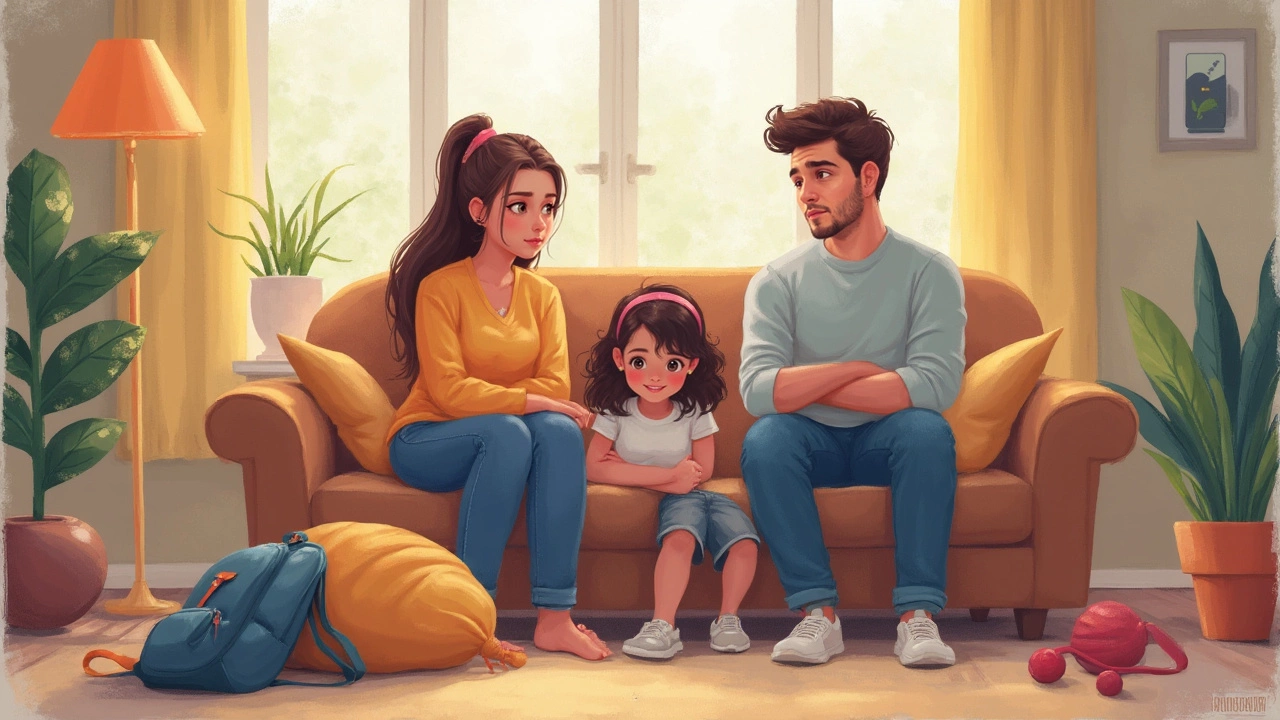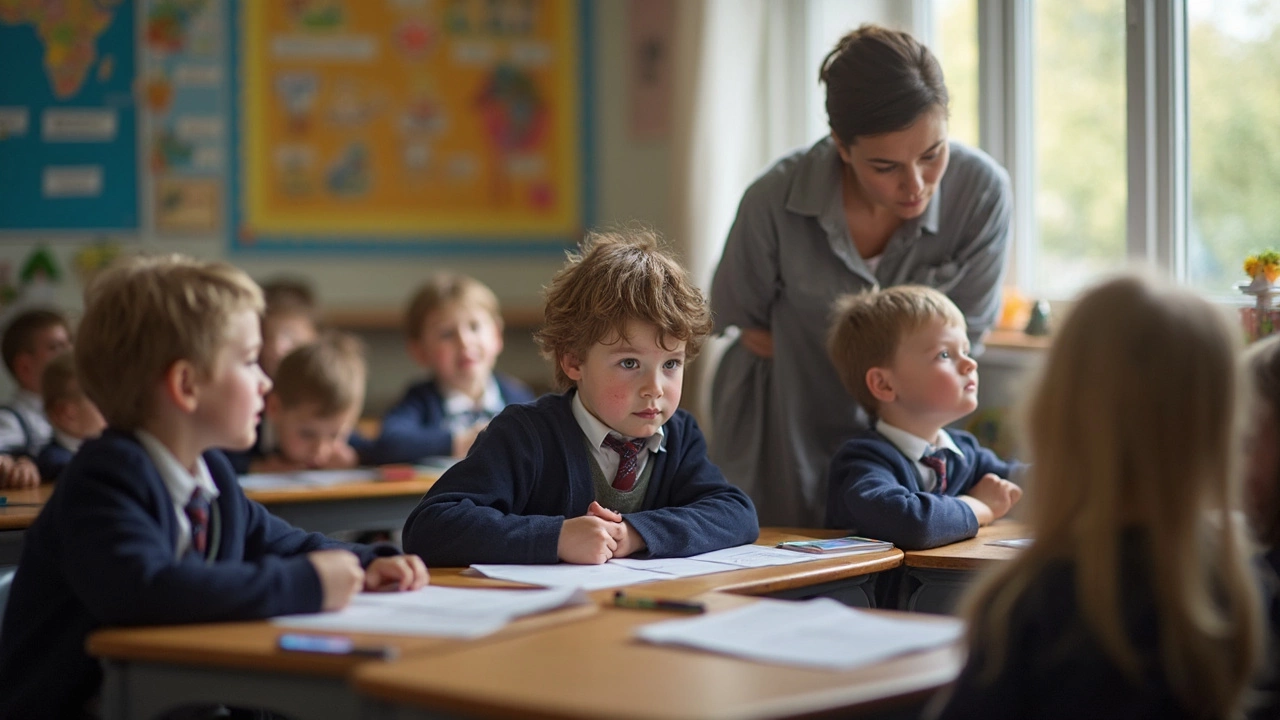If you’ve ever met a kid with ADHD, you’ve probably noticed the nonstop energy—fidgeting, chattering, always on the go. But here’s the thing nobody really talks about: these kids actually get tired, sometimes even more than their peers. They just show it differently.
Think about it. Their brains are working extra hard to pay attention, manage impulses, and follow directions. That takes a ton of effort, which can drain their energy fast. Some kids hide their tiredness by acting even more hyper, while others totally zone out or melt down. It's not just all go-go-go—they crash, too.
It’s easy to miss the signs because people expect kids with ADHD to always be wired. But that’s not reality. If you look a little closer, you might notice them yawning in class, getting irritable after a busy day, or struggling to finish basic tasks. This is way more common than you’d think, and it can lead to a lot of misunderstandings at home and school.
- How ADHD Affects Energy Levels
- What Tired Looks Like in Kids With ADHD
- Why Fatigue Gets Overlooked
- Tips to Help Kids Recharge
How ADHD Affects Energy Levels
Most people picture kids with ADHD as full of energy, but there’s more going on below the surface. Their brains work differently, burning through focus and self-control faster than you might expect. That “wired” feeling isn’t endless stamina—it’s their system working on overdrive just to keep up.
The brain chemicals responsible for attention—dopamine and norepinephrine—don’t do their job as efficiently in ADHD. This means kids have to push themselves a lot harder to stay focused during boring or repetitive tasks. After a while, this constant effort drains both mental and physical energy, even if it doesn’t look like it on the outside.
ADHD can mess with sleep, too. Studies show that up to 70% of kids with ADHD struggle with falling asleep or staying asleep through the night. Poor sleep adds another layer of tiredness, and makes it even harder to pay attention or regulate behavior during the day. It’s a cycle that’s tough to break.
| Factor | How It Lowers Energy |
|---|---|
| Impaired focus | Makes the brain work harder to stay on task, which tires kids out |
| Poor impulse control | Uses up mental resources, leaving less energy for school and fun activities |
| Trouble with sleep | Leads to low energy and mood swings in the daytime |
So when you see a kid bouncing off the walls, remember: all that activity can actually be a sign they’re wiped out. Their energy “leaks out” in ways that don’t always look like grown-up exhaustion. Recognizing this is the first step to helping.
What Tired Looks Like in Kids With ADHD
Most people picture a tired kid as sleepy and quiet, maybe even lying down with their eyes half closed. But with kids who have ADHD, fatigue shows up in much less obvious ways. Instead of slowing down, they might speed up. They can get super chatty, silly, or even reckless. Their tiredness isn't your usual "I need a nap" kind of tired.
Some kids get cranky or start picking fights over tiny things. Others start to lose track of what they're doing, forget instructions, or daydream way more than usual. Homework time, for example, can become a total battleground. They might slam doors, roll on the floor, or talk back—not because they want to be difficult, but because their brains are just plain worn out.
You might also notice physical stuff, like headaches, stomachaches, or a look in their eyes that says they're barely hanging in there. Teachers sometimes report kids getting wiggly or disruptive right around mid-afternoon, when their energy tanks.
Here's a quick list of what fatigue can look like in kids with ADHD:
- Over-the-top silliness or goofing off
- Fidgeting getting worse, not better
- Trouble finishing tasks that were easy earlier in the day
- Meltdowns or big emotional reactions to minor problems
- Spacing out or ignoring what’s going on
- Complaining about not feeling well, like headaches or tummy aches
- Sudden drop in motivation or focus
Most adults miss these signals because they don't look the way we expect tiredness to look. The key is connecting these behaviors to fatigue, not just blaming the kid for misbehaving. Spotting these patterns helps you know when it's time for a break, a snack, or just a little extra patience.

Why Fatigue Gets Overlooked
Most people see a kid with ADHD who’s bouncing around and think, “No way this kid could be tired!” But that’s exactly why so many parents, teachers, and even doctors miss the signs of burnout in these kids.
One big reason is that exhaustion doesn’t always look like flopping on the couch or falling asleep at the table. With ADHD, tiredness can show up as more hyperactivity, crankiness, or even wild behavior. Instead of slowing down, a lot of kids speed up. It’s like their bodies are trying to fight off sleepiness with extra movement and noise.
Another reason? There’s a huge overlap between symptoms of fatigue and classic ADHD signs. If a kid is daydreaming, unfocused, or losing things, adults often chalk it up to the ADHD itself—not to being worn out.
Teachers are usually focused on behavior and grades, so these subtle signals slip through the cracks. Parents might not notice either, especially if they’re used to seeing their child in constant motion.
| How Fatigue Shows Up | Often Gets Misunderstood As |
|---|---|
| More fidgeting or restlessness | Classic hyperactivity |
| Shutting down or zoning out | Not paying attention |
| Crankiness, mood swings | Acting out |
| Low motivation to get things done | Laziness or defiance |
Here’s a tip: if you see a kid’s mood or focus drop, or they get extra “wound up” after a long day, try asking about their sleep or if they feel worn out. Sometimes just recognizing fatigue can help adults respond with patience, instead of more frustration or strictness.
Tips to Help Kids Recharge
Helping a kid with ADHD manage their energy isn’t just about getting them to bed on time. Their brains burn through fuel faster, and regular strategies might not work as expected. Here’s what makes a difference in real life.
- Schedule Down Time: Short, regular breaks during schoolwork or chores help a ton. Allow five to ten minutes for a breather between tasks, especially after anything that demands a lot of attention.
- Use Movement to Reboot: Sitting still can increase fatigue. A quick walk, some stretches, or even bouncing on an exercise ball can give a tired brain and body a fresh start. Research from the CDC shows that physical activity can boost mood and focus in kids with ADHD by up to 20%.
- Watch the Sugar and Caffeine: These can cause big energy spikes and crashes. Whole grains, protein-rich snacks, and water help keep energy steady throughout the day.
- Establish Consistent Sleep Routines: About 50% of kids with ADHD have sleep problems, according to the National Sleep Foundation. Keep a set bedtime and wake time, and avoid screen time for at least 30 minutes before bed.
- Help Them Recognize Signs of Fatigue: Many kids with ADHD don’t notice they’re running out of steam. Teach them simple cues—like zoning out, getting irritable, or making mistakes—so they know when to take a break.
Check out this quick data snapshot for perspective on how common these challenges are:
| Challenge | Percentage of Kids with ADHD |
|---|---|
| Sleep difficulties | 50% |
| Daytime fatigue | 38% |
| Trouble focusing after school | 42% |
Small adjustments—like chunking homework, having a fidget tool handy, or planning a ten-minute power nap—can make a real difference. Don’t forget, what works for one kid might not for another, so it’s totally fine to experiment and mix things up.


Write a comment